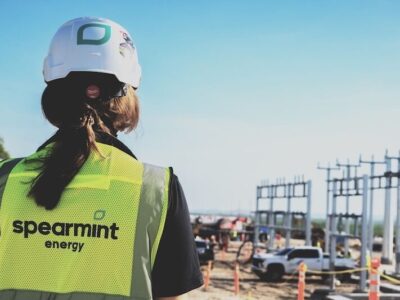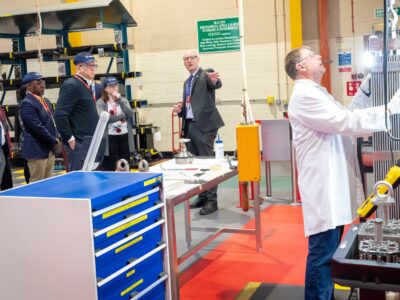During National Clean Energy Week, Cogent Strategies Managing Director Gina Mahony had conversations with several energy leaders about how the U.S. is preparing its energy infrastructure to meet the needs of tomorrow. Leaders from the American Council on Renewable Energy, the Interstate Natural Gas Association of America, the Large Public Power Council, and the Solar Energy Industries Association spoke with Mahony about their thoughts.
Abigail Ross Hopper, President and CEO of the Solar Energy Industries Association (SEIA), a trade association representing over 1,200 companies throughout the solar and storage value chain, explained the current opportunities facing the sector. Hopper explained, “We need all the energy we can get,” and “that each one comes with its own unique profile, and its own unique challenges, and its own unique citing issues, and its own unique speed at which it can be built. And solar and storage are the fastest to be built.” Five years ago, most of the necessary materials for the industry were imported, but “that is no longer the case,” she argued, pointing to the significant onshoring effort that occurred. Despite this, she still has hope for substantial future growth with the support of utilities, corporations, and homeowners: “I am a believer that the market will win out in this debate around policy versus market,” she stated, and pointed to growth already occurring in states like Arkansas and Ohio that are not traditionally known for solar.
Across market segments, Hopper reflected, “I think it’s going to be a time of great innovation, both in the technology, but also in the business model.” There is significant growth on the commercial side of the industry, for example. She highlighted a lot of opportunities there “for continued education of the customer, but also standardization of the contracting and standardization of the financing.” She also emphasized the need to resolve permitting issues and address inconsistencies in processes between the Department of Fish and Wildlife offices and Bureau of Land Management offices across states.
On the residential side, Hopper expects more of a downturn when the loss of tax credits for individual homeowners at the end of the year, but still noted that more than 5 million people have solar on their homes: “There’s clearly a value position there.” She also said that SEIA can put more emphasis on energizing and organizing homeowners going forward: “We kind of have this built-in infrastructure of advocates that I think we can do a better job of mobilizing.”
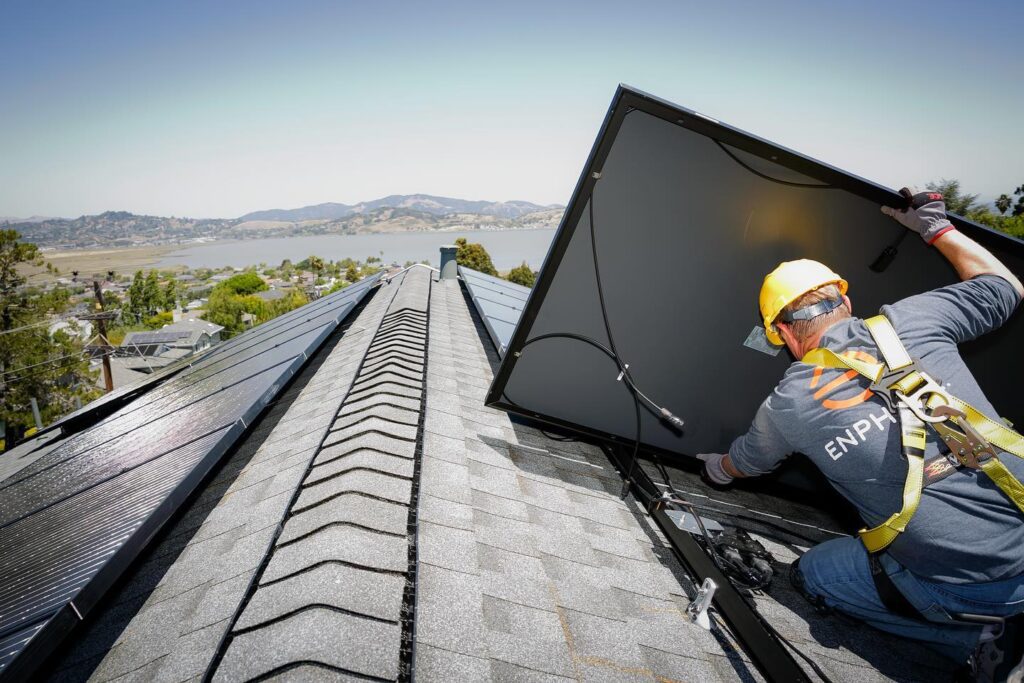
Photo Courtesy Solar Energy Industries Association
Similarly, Ray Long, President and CEO of the American Council on Renewable Energy (ACORE), a nonprofit focused on advancing the policies, finance, and technological innovations necessary for the development and deployment of clean energy throughout the U.S., also emphasized the incredible energy opportunity for the country. 118 gigawatts (GW) of new generation needs to be built, “the equivalent of twelve New York Cities,” with interested, large-scale buyers extending beyond just data centers, also including manufacturing electrification, industrial electrification, and residential electrification. He pointed out that several of these industries have tremendous bipartisan support, including aluminum – “Democrats and Republicans alike would love to see more industries established here, and that’s one of them – and crypto – another thing that’s near and dear to Republicans and the Trump administration.” Long summarized the status quo: “The real question for all of us is, are we going to be able to build everything in order to keep prices reasonable for consumers and to meet that demand challenge?”
Long described what the country is experiencing now as an “artificial blockage” because, beyond the interested buyers, the U.S. has developers in queues around the country trying to get projects interconnected, as well as banks trying to finance the projects. He gave examples of some of the challenges that this market needs to overcome, including “things like stop-work orders on projects that have been fully permitted, things like, permits going through the Department of Interior and not having the staff assigned to them to move them through in a quick and efficient way.” Figuring out those problems and going back to a laissez-faire market will put the country “in a situation where we’re helping to grow the economy, where we’re helping to drive prices down… and then if there’s a need for government intervention beyond that, we let that happen.”
Long discussed a concern growing among Republican governors and representatives that they are not able to take advantage of these opportunities. It all requires a change in how we talk about energy, Long argued: “The more the lexicon continues to change, where we’re not talking about fossil versus renewable, that we’re talking about energy solutions as a whole, the more we’re going to be able to come to a common reasoning about how we want to get to the things that voters and energy consumers really need, and deserve, at the end of the day.”
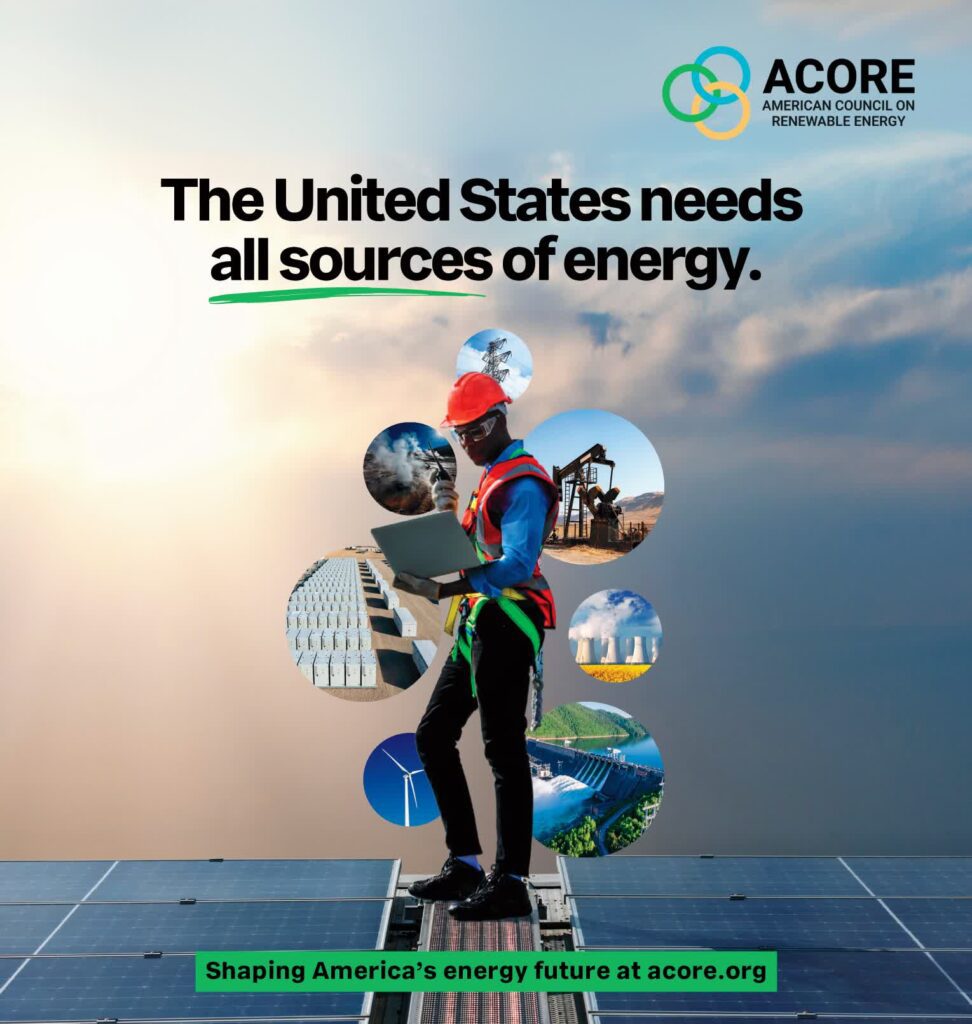
Photo Courtesy American Council on Renewable Energy
Tom Falcone, President of the Large Public Power Council (LPPC), noted that across its members, which include twenty-nine of the nation’s largest public power utilities, “we have 80 gigawatts of generation right now, and we need to build 60 gigawatts over the next 10 years, so a little less than double over 10 years.” In order to meet that goal, he emphasized that LPPC takes an all-of-the-above approach to energy. For example, he pointed to his prior work on South Fork Wind off the coast of New York, as well as to the New York Power Authority (NYPA)’s efforts to develop at least one gigawatt of nuclear power for the state. He explained the logic of using a variety of different resources: “A good reason for that is, depending on where you are in the country, you have access to different energy sources. So one of the things that you’re going to take into account is what’s in your local environment, and what can you take advantage of? What makes sense?” He added that none of these utilities want to be the reason that the U.S. does not win the artificial intelligence or advanced manufacturing races. At the same time, they do not want to let customers down, even if they are not the ones demanding and paying for thousands of megawatts: “There’s a lot of concern from people who are just normal businesses that want to expand, they need five megawatts, and now suddenly, can they get it? Can they expand their business?”
Falcone noted several obstacles facing LPPC’s members that the association is working to address. First, he pointed to Department of the Treasury regulations that can hinder the ability of power utilities to build infrastructure for customers, particularly large data centers, due to financing through tax-exempt bonds. “So one of the things we’re doing is working with Treasury to update the regulation, because it really prohibits us from making some investments,” he explained. A lot of LPPC’s work is focused on technical regulatory work, according to Falcone: “How do we handle retirements in the country with very rapid load growth? How do we handle load additions? How do we get to better load forecast?” He also placed significant emphasis on workforce development, after thirty years of stagnant load growth, noting that “probably the biggest constraint is your line workers who are doing a lot of day-to-day construction, and these are jobs that require high skill, so they have long apprenticeships and a lot of training, and they’re great jobs.” As a result, numerous LPPC members are working with high schools and community colleges to build out their workforces.
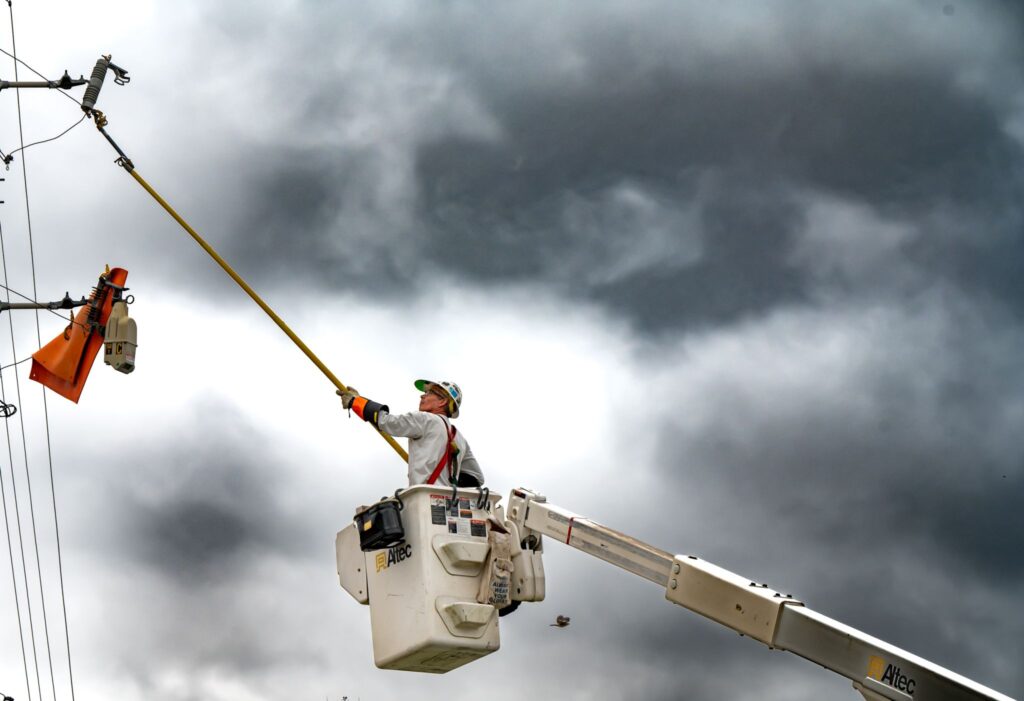
Photo Courtesy Orlando Utilities Commission
Finally, Rob Mosher, Vice President of Government Affairs at the Interstate Natural Gas Association of America (INGAA), a trade association representing the midstream portion of the natural gas value chain that includes 200,000 miles of interstate natural gas pipeline infrastructure and several LNG export facilities, also pointed to growth in his sector. “Our member companies are looking to expand because natural gas is integral to our economic sustainability and national security interests,” Mosher explained, referencing the most growth occurring in Texas and Louisiana in the Gulf Coast, in the Permian Basin, and in the Southeast, particularly Pennsylvania. He pointed to huge opportunities for further expansion.
Besides the policies and regulations that will make these investments more desirable, “it’s also the market that will be driving these processes… I think it’ll certainly be a business decision,” he described, also highlighting the deployment of artificial intelligence and data centers and the need for more power in New England and the Mid-Atlantic.
Like the other companies, permitting reform was top of mind for the INGAA, with Mosher describing the processes as “slow, inefficient, and overly litigated.” Although well-intentioned, he pointed to the National Environmental Policy Act (NEPA) and the Clean Water Act as particular hold-ups, which is why the INGAA is seeking statutory changes and regulatory framework modifications: “What we have been seeking on behalf of the interstate natural gas pipeline is that there really should be not only a return to that original intent as Congress originally enacted these laws, but there should also be a more established, predictable agency participation schedule, in addition to clarity more specificity on stakeholder standing and shortened times for legal redress.” Mosher also expressed his optimism on reform improvements moving through Congress: “What we’ve seen is that there is a momentum growing, for perhaps a few different reasons, in a bipartisan manner, that permitting needs to be modified… so we can continue to achieve success domestically and internationally with regard to providing energy for not only Americans, but also those around the world.”
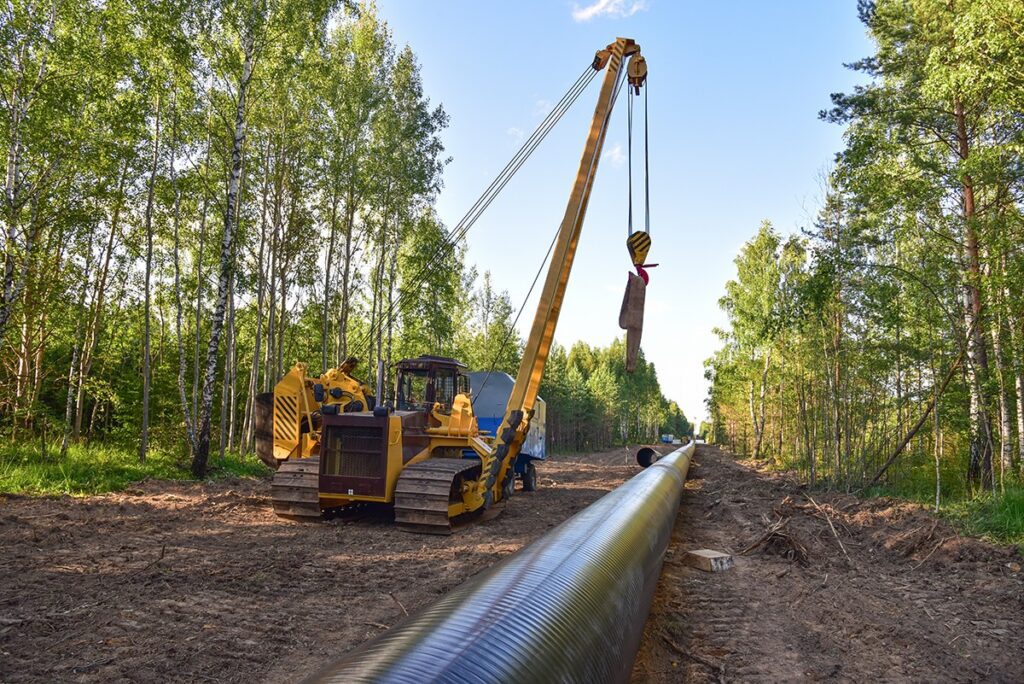
Photo Courtesy Interstate Natural Gas Association of America


